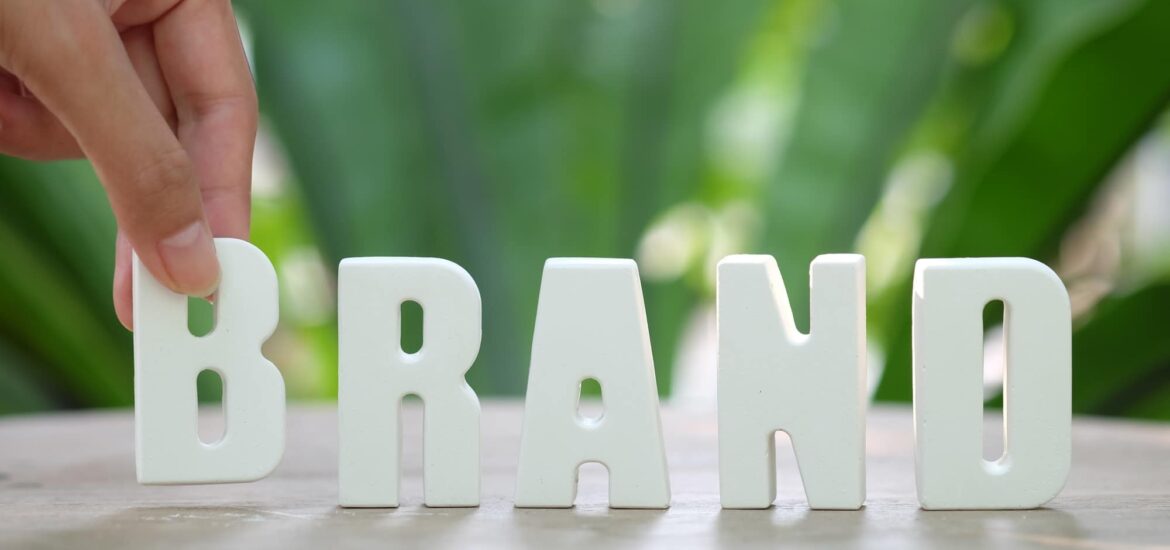Branding is an essential part of the marketing plan that companies, businesses and organizations use to differentiate themselves from competitors. Also, remain relevant in the minds of consumers. Thus, it is an important part of a marketing strategy because a well-established brand will show consistency and gain consumer trust.
What Is Branding?
Branding is a marketing practice in which companies and organizations create a product name, associated symbol, characteristics, colors and design that are easily identifiable; with the product to maintain a cohesive image for the public. Various elements like market research, data analysis, customer service, promotional merchandise, online presence, logo and slogans all work together to create a brand identity. Moreover, branding is the process of shaping and creating the brand with the desired image associations. Further more maintaining that image and reputation.
Learn More : 3 Most Important Ways to Create a Brand Identity
Branding is the process of giving meaning to an organization, company, product, or service by creating and shaping a brand in consumers’ minds. Admittedly, it is one of those marketing concepts that are a bit vague and can quickly become confusing.
Brand Definition
“Branding is the perpetual process of identifying, creating, and managing the cumulative assets and actions that shape the perception of a brand in stakeholders’ minds.”
Here is a rough breakdown:
Perpetual Process
Branding is a perpetual process because it never stops. People, markets, and businesses are constantly changing and the brand must evolve in order to keep pace.
Identify, Create, Manage
There is a structured process to branding, one where you must first identify who/what you want to be to your stakeholders. Secondly, create your brand strategy to position yourself accordingly, and then constantly manage everything that influences your positioning.
Cumulative Assets and Actions
Your positioning must be translated into assets (e.g., visual identity, content, products, ads) and actions (e.g., services, customer support, human relations, experiences) that project it into your stakeholders’ minds, slowly building up that perception.
Perception of A Brand
Also known as reputation. This is the association that an individual (customer or not) has in their mind regarding your brand. This perception is the result of the branding process (or lack thereof).
Stakeholders
Clients are not the only ones that build a perception of your brand in their minds. Stakeholders include possible clients, existing customers, employees, shareholders, and business partners. Each one builds up their own perception and interacts with the brand accordingly.
A brand is the idea or image people have in mind when thinking about specific products, services, and activities of a company; both in a practical and emotional way. This combination of physical and emotional cues is triggered when exposed to all the touch points between a person and a specific brand. These can be the brand name, logo, products, visual identity, staff, or advertising amongst others.

Why Is Branding Important?
Branding importance lies in the influence it has over the consumer decision-making processes. Therefore a brand’s position in the market will impact consumer purchases and overall business revenue. Successful branding can help create a successful company and propel already successful companies toward greater success.
Read More : 4 Branding Tips for Small Business
Branding is beyond the design of a product, a logo or tagline. Additionally a brand helps people identify and recognize your products, differentiates your company from the competition, helps you connect with customers emotionally, and builds trust with different stakeholders.
How to Define Your Brand?
If you’re thinking about how to rebrand your business, its products or services, or if you want to assess where your brand stands at present. There are a few key aspects you should consider:
- The big idea – what lies at the heart of your company?
- Values – what do you believe in?
- Vision – where are you going?
- Personality – how do you want to come across?
If you can start to answer these questions with clarity and consistency, then you have the basis for developing a strong brand.
How to Find Your Brand Purpose?
Finding your brand purpose should be the first step of any brand strategy, yet very few organizations do it. A brand purpose is the reason for an organization’s activities. It is based on what a company strongly believes in, and what difference it can make in the world. It isn’t necessarily about saving the planet, however, it needs to be worthy to some extent. For example, by taking small yet meaningful actions.
To find your brand purpose you need to ask yourself: Why does your organization/brand exist? The benefits of having a clear brand purpose and why it’s so essential to any organization’s brand strategy.
Brands who have a purpose,
- Stand up for a belief that will add value to the lives of their consumers, society and/or the environment.
- It Stands out from competitors thanks to a focused long-term strategy and a very clear message.
- Stand firm by creating a strong corporate culture with a clear vision for the brand’s long-term mission.
What Is the Difference Between a Brand and A Logo?
There is a general perception that logo design and branding are the same thing. Sometimes these two terms are even used as synonyms. However, although they are closely related and must work together in a cohesive way, they are very different processes.
Conclusion
A brand represents the sum of people’s perception of a company’s customer service, reputation, advertising and logo. And when all of these parts of the business are working well together, the overall brand tends to be healthy.
Do You Know What Is Branding and Why Should Your Business Use It? Please share your knowledge by commenting on them at Trdinoo for others to learn. Please subscribe and share us with your friends and networks.
